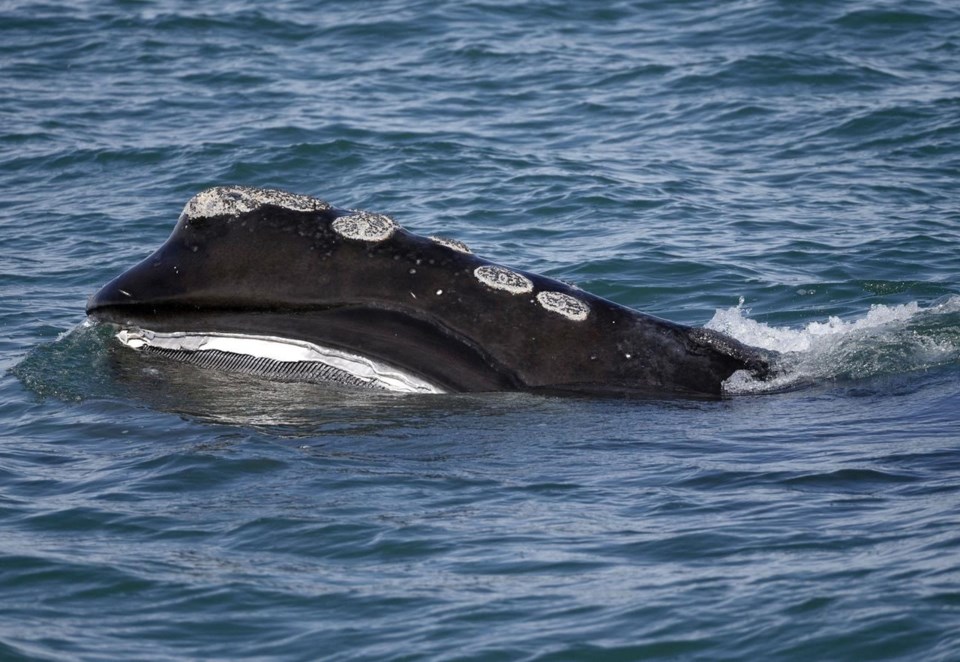Populations of a vulnerable species of marine mammal, numerous species of abalone and a type of Caribbean coral are now , an international conservation organization said Friday.
The International Union for Conservation of Nature announced the update , or COP15, conference in Montreal. The union's hundreds of members include government agencies from around the world, and it's one of the planet's widest-reaching environmental networks.
The IUCN uses its Red List of Threatened Species to categorize animals approaching extinction. This year, the union is sounding the alarm about the dugong — a large and docile marine mammal that lives from the eastern coast of Africa to the western Pacific Ocean.
The dugong is vulnerable throughout its range, and now populations in East Africa have entered the red list as critically endangered, IUCN said in a statement. Populations in New Caledonia have entered the list as endangered, the group said.
The major threats to the animal are unintentional capture in fishing gear in East Africa and poaching in New Caledonia, IUCN said. It also suffers from boat collisions and loss of the seagrasses it eats, said Evan Trotzuk, who led the East Africa red list assessment.
“Strengthening community-led fisheries governance and expanding work opportunities beyond fishing are key in East Africa, where marine ecosystems are fundamental to people’s food security and livelihoods,” Trotzuk said.
The IUCN Red List includes more than 150,000 species. The list sometimes overlaps with the species listed under the U.S. Endangered Species Act, such as in the case of the North Atlantic right whale. More than 42,000 of the species on the red list are threatened with extinction, IUCN says.
IUCN uses several categories to describe an animal’s status, ranging from “least concern” to “critically endangered.” IUCN typically updates the red list two or three times a year. This week’s update includes more than 3,000 additions to the red list. Of those, 700 are threatened with extinction.
Jane Smart, head of IUCN’s Centre for Science and Data, said it will take political will to save the jeopardized species, and the gravity of the new listings can serve as a clarion call.
“The news we often give you on this is often gloomy, a little bit depressing, but it sparks the action, which is good,” Smart said.
Pillar coral, which is found throughout the Caribbean, was moved from vulnerable to critically endangered in this week's update. The coral is threatened by a tissue loss disease, and its population has shrunk by more than 80% across most of its range since 1990, IUCN said. The IUCN lists more than two dozen corals in the Atlantic Ocean as critically endangered.
Almost half the corals in the Atlantic are "at elevated risk of extinction due to climate change and other impacts," Beth Polidoro, an associate professor at Arizona State University and red list coordinator for IUCN.
Unsustainable harvesting and poaching have emerged as threats to abalone, which are used as seafood, IUCN said. Twenty of the 54 abalone species in the world are threatened with extinction according to the red list's first global assessment of the species.
Threats to the abalone are compounded by climate change, diseases and pollution, the organization said.
"This red list update brings to light new evidence of the multiple interacting threats to declining life in the sea,” said Jon Paul Rodríguez, chair of the IUCN Species Survival Commission.
___
Follow Patrick Whittle on Twitter: @pxwhittle
___
Associated Press climate and environmental coverage receives support from several private foundations. See more about AP’s climate initiative . The AP is solely responsible for all content.
Patrick Whittle, The Associated Press



